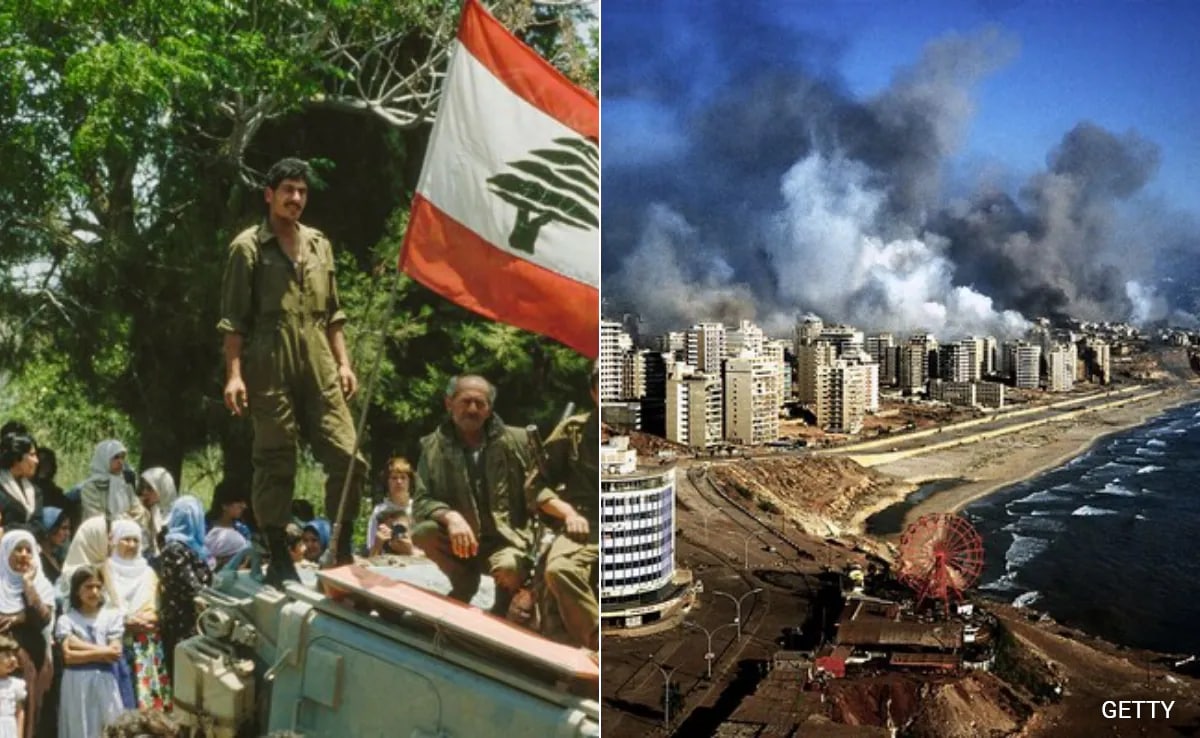Israeli airstrikes killed at least 492 people in Lebanon, including 35 children on Monday. This marked the deadliest day of violence since the October 7 attack by Hamas on Israel, which has now drawn in Hezbollah and escalated the conflict to its worst in nearly a year. Thousands of Lebanese families have been displaced, and the war shows no sign of abating.
The conflict between the Iran-backed, Lebanon-based group and Israel is not new. The two share a bloodied history spanning over four decades.
Israel’s 1982 Invasion and Hezbollah’s Formation
The roots of Hezbollah’s rise and its bloody conflict with Israel trace back to June 1982, when Israel invaded Lebanon in response to attacks by the Palestine Liberation Organisation (PLO) operating from the south. Israel’s occupation reached the heart of Beirut, putting the PLO under siege and forcing its eventual withdrawal. However, Israel’s continued presence, along with the atrocities committed by its allies, notably the Sabra and Shatila massacre, where 2,000 to 3,500 Palestinian refugees and Lebanese civilians were killed, sowed the seeds of resistance.
Among the groups that rose in response was Hezbollah, which was initially formed by Shia Muslim leaders with support from Iran. Representing the marginalised Shia population, Hezbollah quickly became a powerful militia, recruiting heavily from disaffected youth in Beirut’s southern suburbs and the Bekaa Valley.
1983-1985: Bloodshed and Resistance
Between 1982 and 1986, Hezbollah, or groups associated with it, were blamed for several attacks on foreign forces in Lebanon. The most significant of these was the October 1983 bombing of French and American military barracks in Beirut, killing over 300 peacekeepers. While claimed by the Islamic Jihad group, many believed Hezbollah was behind the attack.
By 1985, Hezbollah had grown in strength to force Israeli military to withdraw from much of southern Lebanon, though Israel maintained a “security zone” along the border, policed by its Christian-dominated proxy, the South Lebanon Army (SLA).
1992-1996: Hezbollah’s Political Rise
Following the end of Lebanon’s civil war in 1992, Hezbollah transitioned into a political player, winning eight seats in Lebanon’s 128-member parliament. Over the years, its influence would only grow, both politically and militarily, especially as it provided extensive social services in Shia-dominated areas.
At the same time, its resistance against Israeli forces continued. In 1993, Israel launched “Operation Accountability” in retaliation for Hezbollah’s attacks on northern Israel, leading to a brief but intense conflict that killed 118 Lebanese civilians. The violence escalated again in 1996 with “Operation Grapes of Wrath,” as Israel attempted to push Hezbollah.
2000-2006: Israeli Withdrawal and the July War
In May 2000, Israel unilaterally withdrew from southern Lebanon after nearly two decades of occupation, a move largely attributed to Hezbollah’s resistance. This victory solidified Hezbollah’s status not just as a militia, but as a formidable political force within Lebanon and a symbol of Arab resistance against Israel.
In 2006, the simmering tensions boiled over when Hezbollah captured two Israeli soldiers, leading to the July War. The 34-day conflict resulted in heavy casualties: 1,200 Lebanese and 158 Israelis.
2009-2024: Regional Conflict
By 2009, Hezbollah was no longer just a militia or a resistance movement and had become the dominant military and political force in Lebanon. This power was further demonstrated during Syria’s civil war. Starting in 2012, Hezbollah intervened on behalf of the Assad regime, a move that cost it some support among Arabs but solidified its alliance with Iran and bolstered its battlefield experience.
The Gaza war of 2023 drew Hezbollah back into direct confrontation with Israel. When Hamas launched an unprecedented attack on Israel in October 2023, Hezbollah escalated the conflict, launching rocket attacks from Lebanon and suffering retaliatory strikes.














